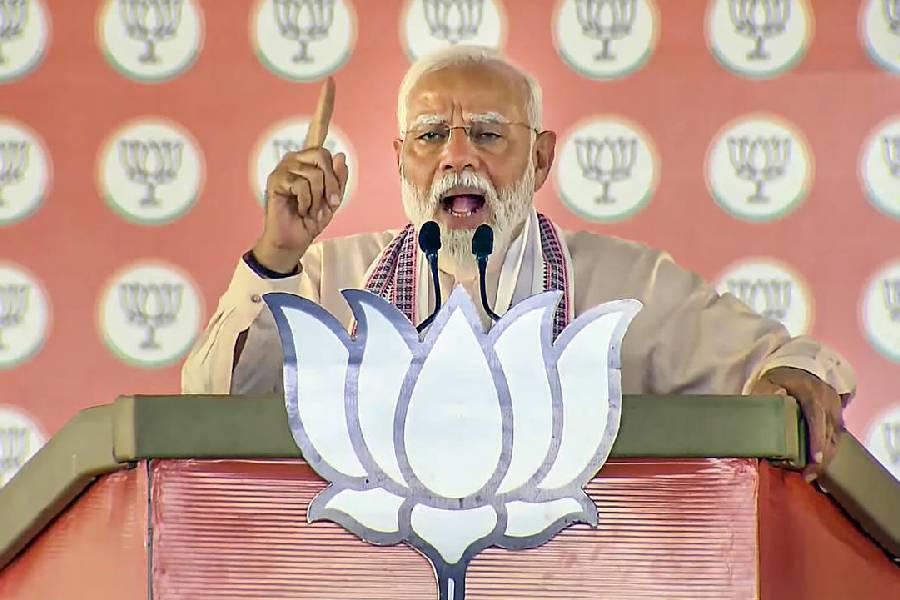 |
It is difficult to convince parents that their child is overweight even if you prove it by measuring the weight in kg and dividing it by the height in metre squared. (The normal value is around 23). Parents are disbelieving even when faced with values higher than 30. Perhaps this is because we tend to equate prosperity with a “well-fed look” and look admiringly at plump parents accompanied by children with pot bellies. Generations of coping with famine, want, the unavailability and unaffordability of food have taken their toll. As the money rolls in, parents abandon their traditional healthy life style and adopt a western approach to food and leisure.
Our tradition of breast-feeding infants provided them with the correct amount of calories for the first six months of life. A “let down” reflex controls the production of milk; as the baby sucks, more milk is produced. This ensures that the baby gets enough for its requirement, and doubles its birth weight by the end of the fifth month and triples it by the end of the first year. A baby that starts life at 2 kg will be normal if it weighs 6 kg on its first birthday. Its appearance will be a stark contrast to the baby that was 4 kg at birth and 12 kg on its first birthday. Both are normal, but cannot be compared as they represent two ends of a normal spectrum.
Unhappy with small but normal babies, parents often supplement breast milk with powdered formula or cow’s milk, a practice that should be avoided as far as possible. There really is no superior or adequate substitute for the “real thing,” that ensures healthy, adequate and normal growth.
Traditional weaning is with home-cooked cereals such rice, ragi and wheat with added milk and sugar. Today parents opt for ready-made sodium-rich, precooked, packaged weaning foods, or “milk biscuits” with disastrous results. These changed child-rearing practices have resulted in an epidemic of childhood obesity: 30 per cent of urban children are obese. Tragically, 70 per cent will go on to become obese adolescents and adults.
With cartoons, television serials, computer games, homework and tuition, children spend more than three hours a day almost motionless. Added to this is snacking on fat-laden packaged food and drinking calorie-high sugar-dense aerated bottled drinks. There is practically no physical activity at all.
Busy parents prefer these sedentary activities as they require minimum parental participation. For activity and sports, parents have to take the children to a place where they can play. There is a shortage of parks and open spaces. Children cannot be left unsupervised as there are the problems of safety, and social crimes like abuse and abduction (This used to be true only for girls but now both sexes are equally in danger).
The problem is compounded by the fact that life in India is very competitive. Only a few sportspeople succeed, but academic excellence ensures “good jobs”. Parents are under the misconception that children who “play” will be too tired to study.
Gradually caloric intake overtakes expenditure and obesity sets in. It also causes many psychological problems. Children develop a negative self image and either withdraw into themselves or become bullies. By the early twenties many are already exhibiting signs of syndrome X or insulin resistance, their blood sugar and lipid profile become abnormal. They develop diabetes, hypertension and heart disease. Girls may develop the polycystic ovarian syndrome (PCOS) with irregular periods and eventually, fertility problems. Indians are genetically prone to these abnormalities.
Studies have shown that children over the age of two need an hour of physical activity a day. This can be a single one-hour session or split into two 30-minute one. Even six 10-minute sessions are effective. It can be running, cycling, playing structured games, skipping or swimming.
Exercise helps children maintain an ideal body weight, feel less stressed and angry, improve concentration in school and sleep well at night. Objective studies using MRI scans demonstrated that exercise in children increases brain activity in the prefrontal cortex of the brain. This is the area associated with cognitive skills, complex thinking, decision making and correct social behaviour. Also the IQ (intelligence quotient) of these children improves by almost four points.
Children all over the world are becoming obese for the same reasons. Parents have a crucial role to play in making children healthy. They should exercise and lead by example. TV viewing should be limited. Oily, ready-to-eat snacks should be avoided.
Other governments (the UK, the US, Japan, China) have woken up to the fact that obese children grow into unhealthy unproductive adults, with medical problems that are a burden on the national exchequer. They have begun to tackle the problem on a war footing. We have not, and this means that India may eventually be a country where the life expectancy starts to fall.
Dr Gita Mathai is a paediatrician with a family practice at Vellore. Questions on health issues may be emailed to her at yourhealthgm@yahoo.co.in










